Demolition Contractors Bury
Find top Demolition Contractor in Bury
Receive up to 3 Demolition Experts quotes for your project today! Compare profiles, reviews, accreditations, portfolio, etc... and choose the best service.

Crestmoor Construction
4.613 reviewsBrandywell Farm, Higher Holton, Brandywell Farm Higher Holton Wincanton, Wincanton, BA9 8AP, GBEXPERTS IN CONSTRUCTION Award winning Crestmoor Construction have successfully completed hundreds of projects throughout the United Kingdom, both small and large. Our Statement Bridging the gap between design and build We are a well-established family run business with a reputation built on providing a reliable quality service to the highest standard. Crestmoor Group of Companies comprises of: Construction Training and Conference Plant and Tool Hire We started Crestmoor Construction in 2001, since then we have grown into a multi-channel business offering design and build, training and plant hire services, all from our headquarters in Wincanton, Somerset. In 2012 we were delighted to receive the Flemming Award for excellence in geotechnical design and construction. This was for our 18 months’ work at Bridgewater’s West Quay, contracted by Somerset County Council. We pride ourselves on our growing reputation, attention to detail, customer service and community engagement. Construction, Plant and Training Our experienced staff are trained to industry standard and can provide specialist operatives for close confinement, working at height, working in or near water, safety boats & pontoons & providing fast response teams for emergencies. Award Winning In 2012 we were the proud winners of the Flemming Award for our work at Bridgewater's West Quay after the serious collapse. 15+ years strong We have been going strong for the past 15 years and each year we look at developing further. Our Experience Concept and design development allows us to explore new ideas, invent new mechanisms, create new looks, think laterally about problems or re-invent existing products. These foundations created at concept stage of a design project are fundamental to it’s success; it is where we work out what works, what doesn’t and what’s possible. We pride ourselves on our growing reputation, attention to detail, customer service and community engagement. In 2012 we were delighted to receive the Flemming Award for excellence in geotechnical design and construction. This was for our 18 months’ work at Bridgewater’s West Quay, contracted by Somerset County Council.
- Services
- Why Us?
- Gallery
Get Quote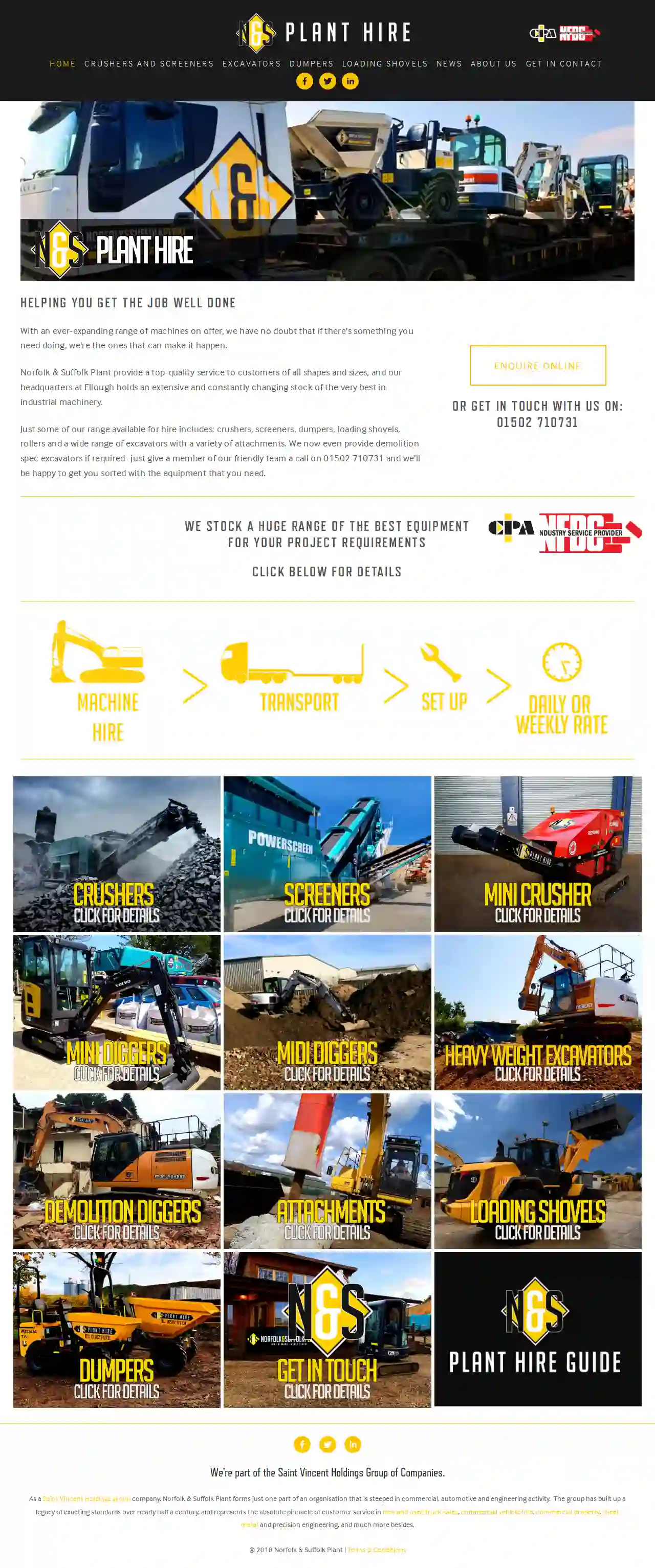
Norfolk & Suffolk Plant
4.515 reviewsEllough, GBWelcome to Norfolk and Suffolk Plant Thanks for taking the time to find out about our company. We're always on the lookout for new ways to prove our expertise, and with an ever-expanding range of services on offer, we have no doubt that if there's something you need doing, we're the ones that can make it happen. We work all over the country, providing top-quality service to customers of all shapes and sizes, and our headquarters at Ellough holds an extensive and constantly changing stock of the very best industrial machinery. KEEPING TRUE TO OUR ROOTS When incorporated in 2014 we set out with a mission statement from our chairman which read as follows: “Norfolk & Suffolk Plant ltd exists to provide our customers the best range of quality rental equipment to help reshape the future of our communities. We are proud to say we are investing millions of pounds year on year to ensure you our valued customers get their job well done, however big or small.” Our mission statement is as important to us now as it was back then; and with our growing customer base with glowing 5 star reviews and recommendations we are certainly delivering on our promise- and we will continue to do so. WE WILL HELP YOU GET THE JOB WELL DONE. We now boast one of the largest fleets of Plant Hires in the area for Screeners, crushers and excavators; and we pride ourselves in our quality of service and value for your money. Our 18 strong expert team will deliver and help setup your machine- and it’s all included in one weekly price! HELPING YOU BUILD YOUR FUTURE Our business is looking to expand and grow our capabilities year on year to improve our customer service, productivity and quality of our machines. We have already been investing into some exciting new machines such as an 18m High Reach and brand new 8m- 13m Tele-handlers for early 2019 . We are also advancing our fleet with the latest efficient engine technology to ensure our plant is more than compliant on your sites and is safer for your operators.
- Services
- Why Us?
- Gallery
Get Quote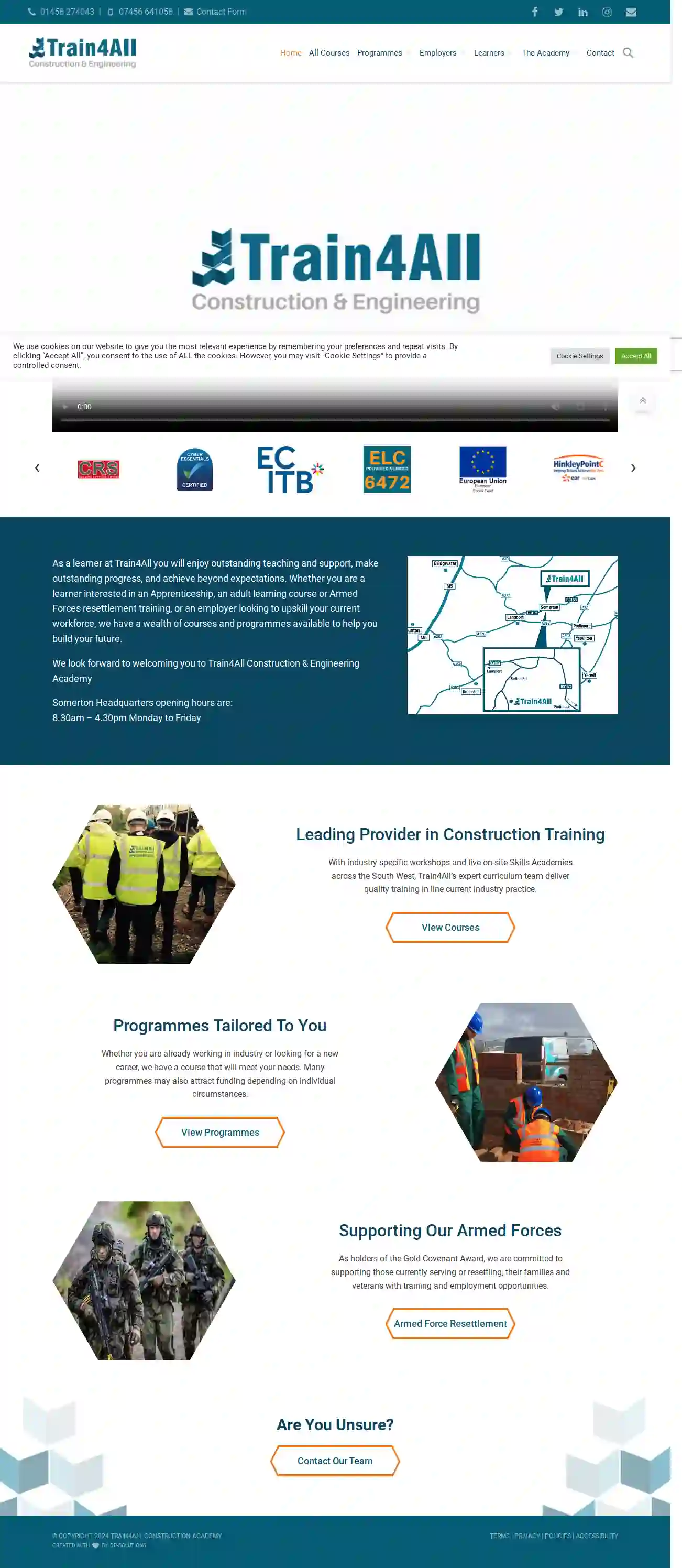
Train4all Construction Academy
4.58 reviewsSomerton, GBTrain4All Construction & Engineering Academy As a learner at Train4All you will enjoy outstanding teaching and support, make outstanding progress, and achieve beyond expectations. Whether you are a learner interested in an Apprenticeship, an adult learning course or Armed Forces resettlement training, or an employer looking to upskill your current workforce, we have a wealth of courses and programmes available to help you build your future. We look forward to welcoming you to Train4All Construction & Engineering Academy Somerton Headquarters opening hours are: 8.30am – 4.30pm Monday to Friday
- Services
- Why Us?
- Gallery
Get Quote
Paul Smith Earthmoving Ashburton
51 reviews100 Clyde Street, Alexandra, 9300, GBLaying the groundwork for a better tomorrow Paul Smith Earthmoving is a leading civil construction company based in the South Island of New Zealand. We specialize in a wide range of services, including earthmoving, excavation, demolition, drainage, construction, contaminated site remediation, track and road maintenance, landscaping, rock supply, landfill management, trucking, and transport works. We have a strong reputation for delivering high-quality, well-managed contracts designed for full client satisfaction. Our team is dedicated to delivering with integrity, as agreed, every time. We complete jobs ranging in scope from residential charge-up works requiring an in-house design, through to fully scheduled commercial tenders with engineered plans. We are powered by 180+ highly skilled staff, all well equipped with a range of advanced plant, equipment, and technology to ensure industry-leading delivery. Our strong reputation is built on a foundation of close client relationships and an outstanding track record in all aspects of civil construction. We have effectively delivered both small and large-scale projects under a range of challenging conditions. Our innovative team is dedicated to delivering with integrity, as agreed, every time.
- Services
- Why Us?
- Gallery
Get Quote
Backyard Projects
53 reviewsHoon Hay, Christchurch, GBBackyard Projects: Your One-Stop Shop for Christchurch Property Needs Backyard Projects is your trusted partner for all your excavation, landscape construction, and property maintenance needs in Christchurch. We offer a comprehensive range of services, from mini excavation and drilling to landscaping, construction, and maintenance, ensuring your property looks its best and functions flawlessly. We understand that every property is unique, and we take pride in providing personalized solutions tailored to your specific requirements. Whether you're looking to create an attractive outdoor living space, enhance your property's value, or simply keep it in top condition, we're here to help. Our team of experienced professionals is dedicated to delivering high-quality workmanship and exceptional customer service. We're committed to working closely with you throughout the entire process, from initial consultation to project completion, ensuring your satisfaction. Contact us today for a free quote and let us help you transform your backyard into a haven of beauty and functionality.
- Services
- Why Us?
- Testimonials
- Gallery
Get Quote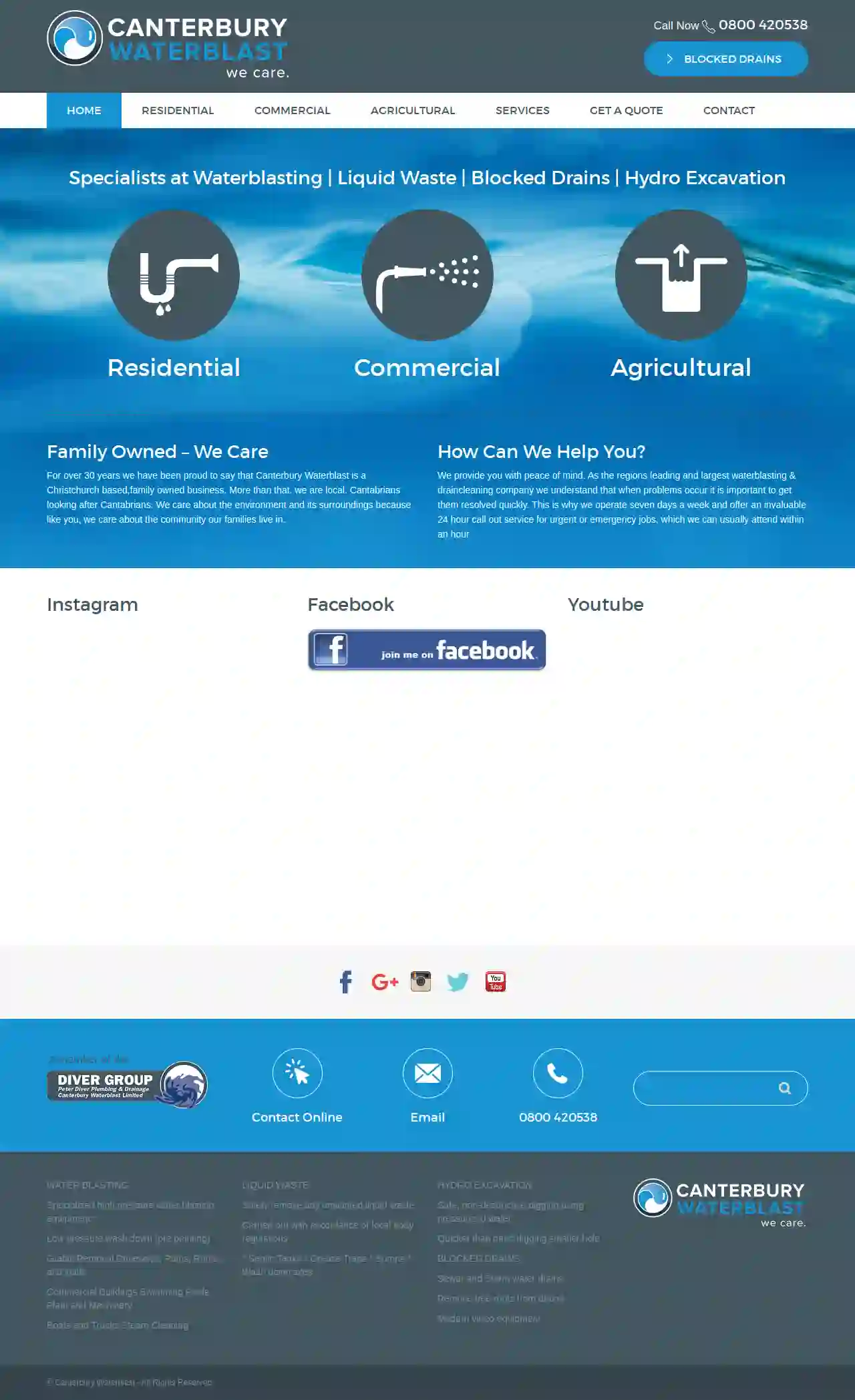
Canterbury Waterblast
4.648 reviews44 Maces Road, Christchurch, New Zealand, GBCanterbury Waterblast: Your Trusted Partner for Waterblasting, Drain Clearing, and Hydro Excavation For over 30 years, Canterbury Waterblast has been a family-owned and operated business serving the Christchurch community. We are committed to providing our customers with the highest quality service and workmanship, ensuring their peace of mind. As the region's leading and largest waterblasting and drain cleaning company, we understand the importance of prompt and efficient solutions. That's why we operate seven days a week and offer a 24-hour call-out service for urgent or emergency jobs, typically arriving within an hour. We are proud to be Cantabrians looking after Cantabrians, and we care deeply about the environment and the community we live in. Our team is dedicated to providing environmentally responsible solutions, using state-of-the-art equipment and techniques to minimize our impact. At Canterbury Waterblast, we are committed to our customers and will travel just about anywhere in the South Island. Contact us today to discover why we are Canterbury's first choice for waterblasting, drain clearing, and hydro excavation.
- Services
- Why Us?
- Gallery
Get Quote
Suffolk Landscape Construction
1Pages Farm, Debenham Road, Debenham, IP14 6JZ, GBAbout us Based near the beautiful village of Debenham, Suffolk Landscape Construction Ltd was started in 2021 by good friends Josh McDonnell and Matthew Deeley who between them hold over 30 years experience in landscaping and groundworks. The company was set up with the goal of combining their shared experience and knowledge within the industry to build high quality, long lasting beautiful outdoor spaces for both private and commercial clients all over East Anglia. Over the last couple of years the company has grown into a well established multi-skilled team who all share the same passion for gardens and landscapes. At the heart Suffolk Landscape Construction is a driving want to provide excellent customer service to develop and create the spaces our clients desire. Working directly with clients or with designers for a bespoke, high quality service that will stand the test of time.
- Services
- Why Us?
- Testimonials
- Gallery
Get Quote
Advanced Foundations Ltd
55 reviewsBury, GBAdvanced Foundations Ltd. Advanced Foundations Limited is a Canterbury based Foundations company specializing in TC1, TC2 and TC3 foundations. We are Site Safe members, Provide a SSSP for every site and our all inclusive quotes are produced within 12 days. Hamish and the team are highly experienced in Foundations and we believe the 3 big ticks for every customer is Price, Quality and Communication but our service doesn’t stop there. We know it’s important to make your life easy so you have time to focus on the next stages of your project and work with our customers to provide a tailored service.
- Services
- Why Us?
- Gallery
Get Quote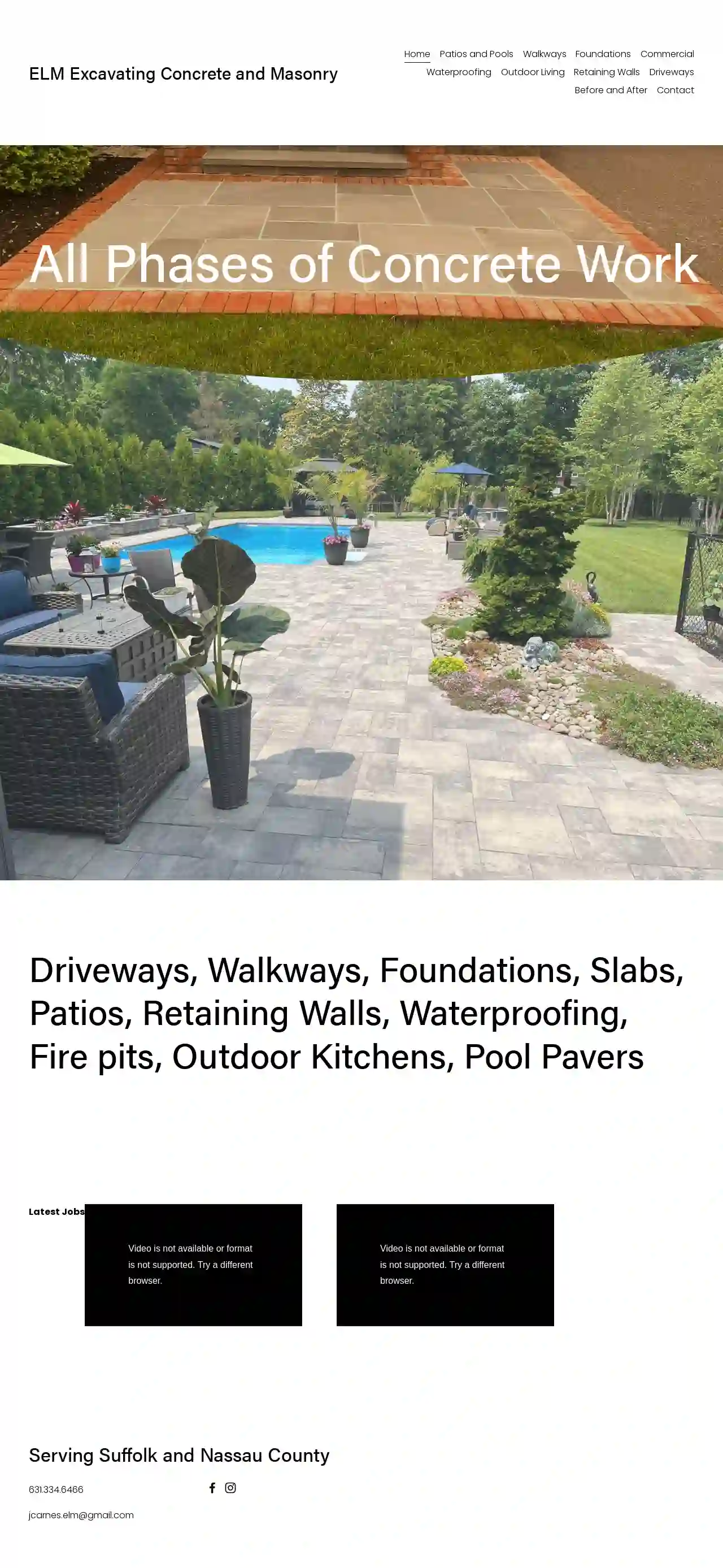
ELM Excavating Concrete and Masonry
51 reviewsBury, GBELM Excavating Concrete and Masonry ELM Excavating Concrete and Masonry is a trusted local business serving Suffolk and Nassau County. We specialize in all phases of concrete work, from driveways and walkways to foundations, slabs, patios, retaining walls, waterproofing, fire pits, outdoor kitchens, and pool pavers. Our team of experienced professionals is dedicated to providing high-quality workmanship and exceptional customer service. We take pride in our attention to detail and commitment to exceeding your expectations. Contact us today to discuss your project and get a free estimate.
- Services
- Why Us?
- Gallery
Get Quote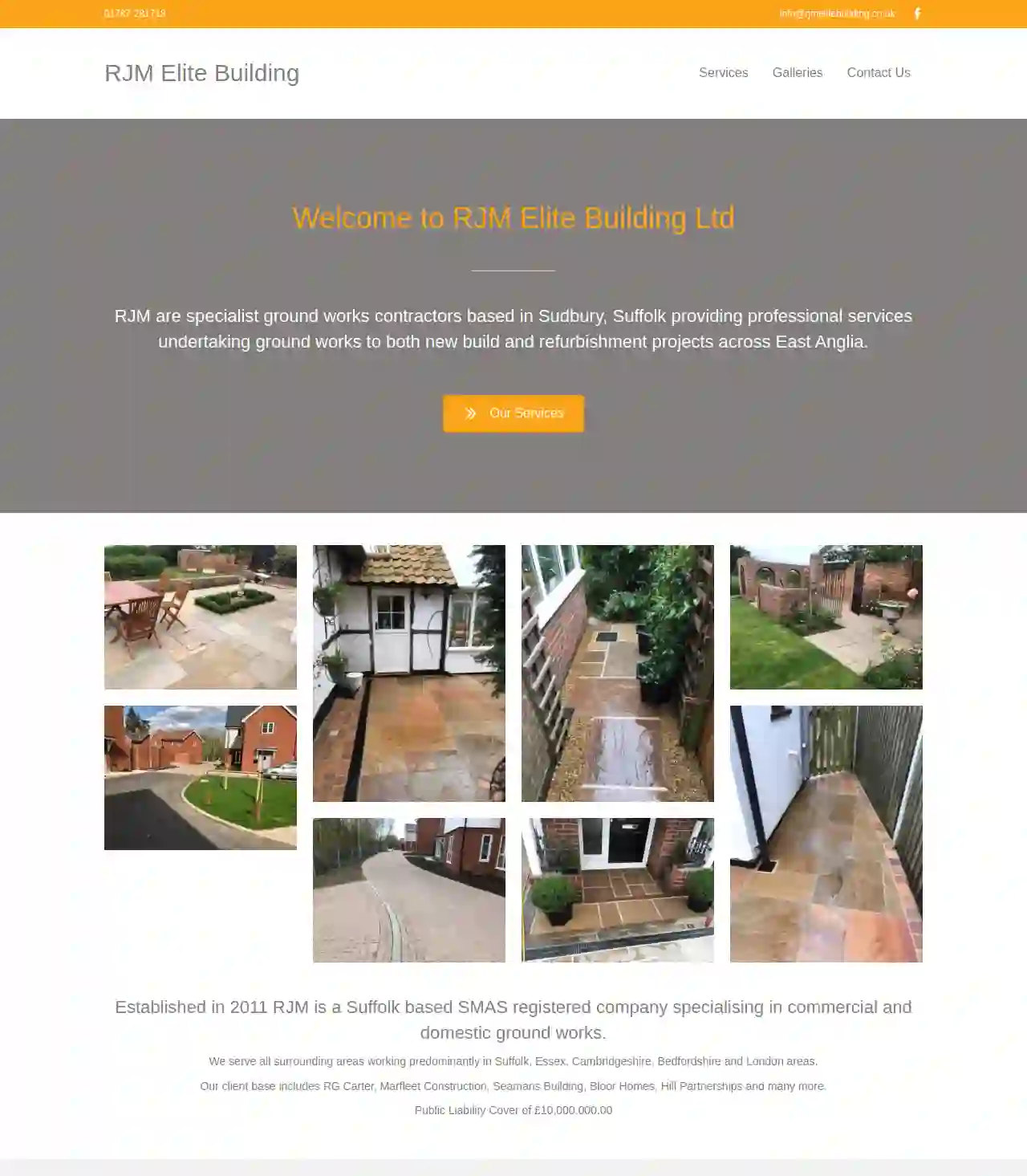
RJM Elite Building
1Meadow View House, 79 Cross Street, Meadow View House 79 Cross Street Sudbury Suffolk, Sudbury, CO10 2DP, GBWelcome to RJM Elite Building Ltd RJM are specialist ground works contractors based in Sudbury, Suffolk providing professional services undertaking ground works to both new build and refurbishment projects across East Anglia. Established in 2011 RJM is a Suffolk based SMAS registered company specialising in commercial and domestic ground works. We serve all surrounding areas working predominantly in Suffolk, Essex, Cambridgeshire, Bedfordshire and London areas. Our client base includes RG Carter, Marfleet Construction, Seamans Building, Bloor Homes, Hill Partnerships and many more. Public Liability Cover of £10,000,000.00
- Services
- Why Us?
- Gallery
Get Quote
Over 11,537+ Excavation Companies in our network
Our excavation providers operate in Bury & surroundings!
ExcavationHQ has curated and vetted Top Excavation Businesses in Bury. Find a top & trustworthy business today.
Frequently Asked Questions About Demolition Contractors
- Dust Suppression: Use water spraying, misting systems, or other dust suppression techniques to control airborne particles.
- Noise Barriers: Erect temporary noise barriers around the demolition site to reduce noise transmission to nearby properties.
- Work Schedule: Schedule noisy demolition activities during permitted hours to minimize disturbance to neighbors.
- Communication: Keep neighbors informed about the demolition schedule and any potential disruptions.
- Implosion: Using explosives to collapse a structure inwards rapidly. Suitable for large buildings in open areas.
- Wrecking Ball: Swinging a large steel ball to impact and break down the structure. Effective for bringing down walls and other solid elements.
- High-Reach Demolition: Utilizing specialized excavators with extended arms and demolition attachments for dismantling tall structures piece by piece.
- Selective Demolition: Removing specific parts of a building while preserving other sections. Often used in renovation projects.
- Deconstruction: Carefully dismantling a building to salvage reusable materials, reducing waste and environmental impact.
- Feasibility Studies: Assessing the viability and challenges of a demolition project.
- Demolition Planning: Developing demolition plans, including method selection, sequencing, and safety procedures.
- Permitting Assistance: Navigating the demolition permitting process and ensuring compliance with regulations.
- Hazardous Material Surveys: Identifying and managing hazardous materials, such as asbestos and lead paint.
- Cost Estimating: Providing accurate cost estimates for demolition services.
- Project Management: Overseeing the demolition process and ensuring it proceeds as planned.
- 'Can I see proof of your licensing and insurance?' Verify their credentials and coverage.
- 'What experience do you have with projects like mine?' Ensure they have relevant expertise.
- 'Can you provide references from past clients?' Check their reputation and customer satisfaction.
- 'What are your safety protocols?' Prioritize contractors who emphasize safety.
- 'How will you handle hazardous materials?' Ensure they have proper procedures for asbestos or lead abatement.
- 'What is your timeline for completing the project?' Understand the project duration.
- 'How will you manage noise, dust, and debris?' Discuss mitigation measures for minimizing disruption.
- 'What are your payment terms?' Clarify payment schedules and any required deposits.
How can I minimize the dust and noise from demolition?
What are the different types of demolition?
What is the role of a demolition consultant?
What questions should I ask a demolition contractor before hiring them?
How can I minimize the dust and noise from demolition?
- Dust Suppression: Use water spraying, misting systems, or other dust suppression techniques to control airborne particles.
- Noise Barriers: Erect temporary noise barriers around the demolition site to reduce noise transmission to nearby properties.
- Work Schedule: Schedule noisy demolition activities during permitted hours to minimize disturbance to neighbors.
- Communication: Keep neighbors informed about the demolition schedule and any potential disruptions.
What are the different types of demolition?
- Implosion: Using explosives to collapse a structure inwards rapidly. Suitable for large buildings in open areas.
- Wrecking Ball: Swinging a large steel ball to impact and break down the structure. Effective for bringing down walls and other solid elements.
- High-Reach Demolition: Utilizing specialized excavators with extended arms and demolition attachments for dismantling tall structures piece by piece.
- Selective Demolition: Removing specific parts of a building while preserving other sections. Often used in renovation projects.
- Deconstruction: Carefully dismantling a building to salvage reusable materials, reducing waste and environmental impact.
What is the role of a demolition consultant?
- Feasibility Studies: Assessing the viability and challenges of a demolition project.
- Demolition Planning: Developing demolition plans, including method selection, sequencing, and safety procedures.
- Permitting Assistance: Navigating the demolition permitting process and ensuring compliance with regulations.
- Hazardous Material Surveys: Identifying and managing hazardous materials, such as asbestos and lead paint.
- Cost Estimating: Providing accurate cost estimates for demolition services.
- Project Management: Overseeing the demolition process and ensuring it proceeds as planned.
What questions should I ask a demolition contractor before hiring them?
- 'Can I see proof of your licensing and insurance?' Verify their credentials and coverage.
- 'What experience do you have with projects like mine?' Ensure they have relevant expertise.
- 'Can you provide references from past clients?' Check their reputation and customer satisfaction.
- 'What are your safety protocols?' Prioritize contractors who emphasize safety.
- 'How will you handle hazardous materials?' Ensure they have proper procedures for asbestos or lead abatement.
- 'What is your timeline for completing the project?' Understand the project duration.
- 'How will you manage noise, dust, and debris?' Discuss mitigation measures for minimizing disruption.
- 'What are your payment terms?' Clarify payment schedules and any required deposits.